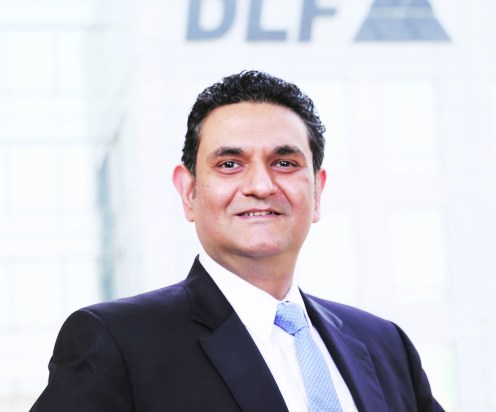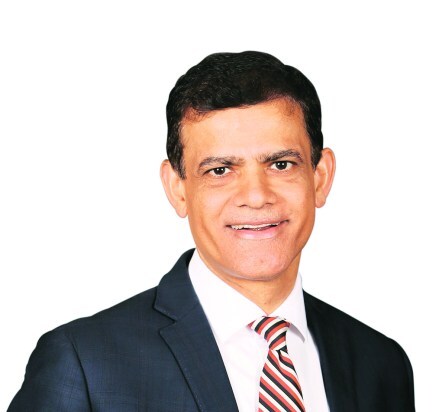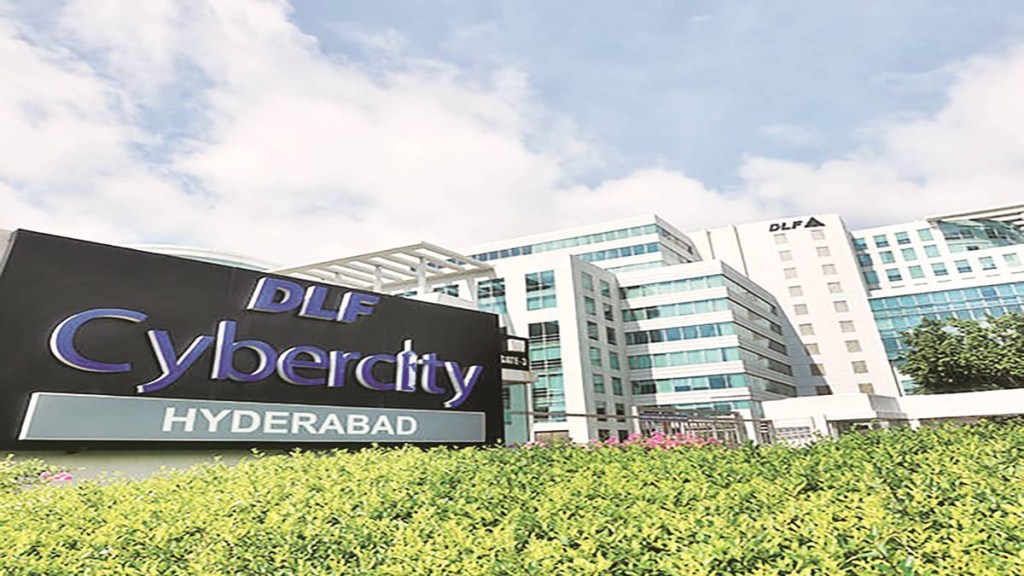Suraksha Rawat, a marketing executive working at a telecommunications firm, makes the most of her office location in DLF Cybercity, Gurugram. A five-minute walk takes her to CyberHub, a go-to hangout place for residents and working professionals in the Millennium City. Whether it’s attending a team meeting at Social, taking a short stroll to the amphitheatre, shopping at her favourite outlets, Uniqlo and Marks & Spencer, sneaking out for a grooming session at Looks Salon or socialising at Imperfecto, she does it all in the middle of a working week.
“My house is 5 km from my workplace. So, I don’t always go back home early. Instead, I plan my outings and pay a quick visit to these places, maybe once in two days, as these services are in the vicinity. It is also convenient as they are accessible all through the day,” says the 30-year-old professional.
The concept of ‘walk to work’ is now evolving into a ‘walk to work, shop, eat and more’ as mixed-use complexes, or projects that blend commercial, retail, food and beverages (F&B) and leisure spaces, are changing the face of real estate in India. These retail destinations and lifestyle centres are not only offering promising and lucrative returns to developers and investors alike but are also providing work-life balance to consumers like Rawat, who look for convenience next door.
“The demand for such retail spaces is rising as occupiers are able to fulfill their daily household chores as well as business needs without having to travel for the same. Bandra Kurla Complex (BKC) and DLF Cybercity are some examples of such all-in-one complexes, which have not only become the de-facto central business districts in Mumbai and Gurugram, respectively, but are also attracting more retail and multiple channels for revenue generation of developers. They are bolstering the financial viability of the projects as the gross yields of retail spaces are typically higher than 6-8% in commercial,” says Vimal Nadar, senior director and head of research, Colliers India, a global real estate services firm.
At the same time, there is greater investment opportunity for developers. “The format offers institutional investors potentially higher revenue across a diversified tenant base while providing them the key differentiator, which acts as the USP in retaining a commercial occupier,” adds Anuj Puri, chairman of Anarock Group, a real estate services company.
“In the post-Covid world (and this existed even before), employers and landlords have realised that employees are looking at more amenities and they have had to offer some variations of these to get them back to offices. Larger building complexes which have F&B and some retail spaces are the ones seeing leasing traction. The ‘live, work, play’ concept is being adopted in complexes across the country,” says Gagan Randev, executive director, India Sotheby’s International Realty.
The year 2023 began on a promising note for Indian real estate, with most sectoral indicators recording annual highs in the first quarter. “Going forward, we expect that the country’s strong macro fundamentals and the real estate sector’s resilience will help it sustain its growth trajectory, global headwinds notwithstanding,” said real estate consultant CBRE South Asia in its ‘India Market Monitor—Q1 2023’ released in April.
According to the report, the retail sector leasing grew by 130% year-on-year to 1.5 million square feet in January-March 2023.
According to the report, the fashion and apparel segment had a majority share in total leasing activity at 31%, followed by homeware and department stores at 19%, F&B at 11%, luxury at 8% and consumer electronics at 5%.
An interesting finding of the report was a 474% year-on-year increase in retail supply within the same period.
Similarly, the supply of prime workplaces in India is predicted to reach 1 billion square feet in tier-I cities by 2030 from its current level of 700 million square feet of Grade A offices, as per a study conducted by the Confederation of Real Estate Developers’ Associations of India (CREDAI), an apex body of private real estate developers in India, and CRE Matrix, a real estate data analysis platform. Grade A office buildings are sought-after commercial properties and come with higher rentals than average rental areas in the neighbourhood.
“The consistent growth of the Indian commercial real estate sector can be attributed to several factors, including the country’s strong economic fundamentals, the rise of new-age industries, and the increasing influx of multinational corporations,” says Boman Irani, president of CREDAI.
Key differentiators
Facilities like food courts, restaurants, gift stores, banks, polyclinics or sports hubs with badminton, table tennis or billiards are helping employees unwind after a hard day at work. “The work culture is changing, and this mix makes it easy for professionals,” says Anil Wanchoo, who owns a tech startup with offices located in Kondapur, the Financial District and Gachibowli areas of Hyderabad. He often plans meetings at spaces offering such work-life balance to keep his employees happy.
According to real estate company Brookfield Properties, mixed-use development exemplifies the ‘live, work, play’ concept, offering an engaging environment for individuals seeking more than just a workplace. The company’s mixed-use development at projects such as Worldmark Aerocity and Gurugram, Ecoworld in Bengaluru, and Downtown Powai in Mumbai are high in demand for blending work, leisure and community engagement seamlessly and encouraging collaboration and creativity.
Reema Kundnani, region head—west India and head of marketing, branding and communication at Brookfield Properties, says, “The demand for mixed-use development represents the future of real estate, redefining cities and transforming the way we live, work and play. By seamlessly integrating office, retail and F&B offerings, they create vibrant and inviting destinations that cater to the diverse needs of modern professionals and businesses. We are not just in the business of building and managing buildings; we are creators of vibrant destinations where people and communities truly want to be.”
According to Kundnani, the concept of mixed-use development goes beyond just providing office spaces—it creates a ‘9-to-9’ experience that transforms throughout the day, catering to diverse needs and preferences. “Beyond working hours, the canvas of these destinations changes, offering a range of experiences that cater to every individual. Whether you desire a quick bite at the bustling food courts, savour a five-course candlelight meal at the elegant restaurants, relax at the cozy cafes, indulge in entertainment at the vibrant gaming areas, or unwind at the lively pubs, these mixed-use complexes have it all. The seamless integration of various amenities ensures that occupants can easily transition from work to leisure within the same vibrant ecosystem,” says Kundnani.
F&B is also a key differentiator when it comes to office parks—millennials and Gen Z’ers want to have options for dining and taking time out in a casual space during a workday. “The inclusion of integrated amenities within commercial complexes is preferred in large-scale projects as this is what customers prefer. This trend has been prevalent in several countries. Now, it’s fast catching up in India, especially in secondary cities. Food kiosks, entertainment and gaming zones within projects encourage employees to work from the office. The trend of restaurateurs setting up cafes, breweries and restaurants within office parks is increasing and is a good investment from their perspective with dedicated catchment and access to neighbourhood requirements,” says Nirupa Shankar, joint managing director of Brigade Enterprises, which has integrated townships as well as commercial projects in Bengaluru, Mysuru, Ahmedabad, Chennai and Kochi.
Another appealing factor of these mixed-use complexes has been the stringent safety measures and a controlled environment being provided to consumers and businesses alike. As per Arora of JLL India, “Features like contactless entry systems, advanced ventilation systems and spacious common areas are being welcomed after the pandemic. All this put together promotes collaboration and fosters a sense of community among tenants. Also, the desire for dining out and experiencing a variety of cuisines has been growing in recent years. The convenience of having multiple dining choices within the same complex is driving demand. Employees value workplaces that are conveniently located, reducing the time and effort spent on commuting for better work-life balance.”
Such places are also great examples when it comes to putting less pressure on the already overwhelmed roads, says Shankar of Brigade Enterprises.
Sheer convenience and a hassle- and traffic-free experience make these places look far more attractive and appealing to the new-age professionals who aspire for a good lifestyle even at their workplace. “Employees now want to have all facilities within their easy reach. We may only see this trend growing further,” adds Puri of Anarock Group.
Rising demand
With the pandemic-era trend of working from home slowly waning, more people are now stepping out of their houses, collaborating and socialising every day. An extensive survey undertaken by The Office Pass (TOP), a coworking and managed office operator for small and medium businesses (SMBs) in Delhi-NCR, suggests that 67% of employees now want to work from office, 18% want to work from office close to their place of residence, and the remaining 15% prefer working from home.
“Since corporates are increasingly recognising this trend of improved productivity through collaborative work, we are witnessing a growth in demand for all-encompassing commercial spaces. When we talk about contemporary spaces, there is a greater thrust these days as companies and employees have an aspirational style of working and conducting themselves,” says Karun Varma, senior executive director, north office business, DLF.
The market growth is also stemming from a spike in demand from IT, consulting, start-ups, professional advisors and boutique firms. Shankar estimates, “The demand for the office segment continues to be relatively healthy. It’s stemming from tech (29%), flexible space operators (18%) and engineering and banking, financial services and insurance (BFSI) (17% each) for the country.”
DLF expects a sustained demand across all leading markets, especially tech hubs, which require the necessary infrastructure to build such integrated, community-led workspaces and to attract the new-age personnel. “With this, coupled with the government’s smart cities mission and overall economic growth touted to be co-led by emerging cities, we anticipate development of integrated segments coming to the fore,” says DLF’s Varma, who is witnessing a strong growth trend across geographies, especially in tier-1 cities.
The surge in demand for such serviced office spaces is due to the growing need for flexibility and agility. “Startups, freelancers and established companies require the ability to scale their operations quickly and adapt to changing circumstances,” says Vineet Taing, CEO of Vatika Business Centre, a provider of serviced and virtual office business solutions.
Corporates are also reevaluating their real estate strategies. “Some prefer a campus environment so that they are able to consolidate their offices and work out of one space, allowing for operational efficiencies. Others prefer a hub-and-spoke model to allow ease of access to different micro-markets and creating multiple offices for their staff to easily access,” adds Shankar of Brigade Enterprises.
Apart from cities like Gurgaon, Delhi, Pune, Mumbai, Chennai, Hyderabad, Noida, Bengaluru and Kolkata, the work-and-play trend is catching up in tier 2 towns such as Jaipur, Chandigarh, Mysore and Cochin too, according to Randev of Sotheby’s.
“With complexes providing a safe environment, office parks with these facilities have occupancies greater than 90% on average compared with sub-80% for other spaces. Employees are dictating to companies the gravitational pull to such parks,” adds Randev.
There is also strong competition in the sector, and rising development costs driven by escalating land prices have made it more challenging for developers to develop a single-use property project. Rahul Arora, regional managing director, Bengaluru and Kerala, and head of office leasing advisory, JLL India, feels, “In the context of rapidly rising land costs and the need to reduce risks or volatility in different property sectors, mixed-use development is a sound solution that tends to become a popular option for many future property developments.”
Another trend observed is the establishment of micro-markets in Mumbai and Delhi-NCR, which have been significantly enhanced by the presence of all-in-one office and retail hubs such as BKC and CyberHub.
Over the years, these micro-markets have attracted a diverse set of occupiers due to the inclusion of retail fronts and best-in-class amenities, thus creating an inclusive self-sustained ecosystem buoying collaboration and productivity.
“These spaces are backed by consistent demand. For instance, Grade A office stock in BKC has grown 60% over the past 10 years, from 7.4 million square feet in 2013 to 11.8 million square feet in 2023. The pandemic has accelerated demand for such complexes, as employee convenience has become of utmost importance for occupiers. During H1 2023, there was a 17% increase in the demand for office spaces in BKC, compared to the same period in 2019. Similarly, the office leasing activity in the Cyber City micro-market more than doubled during H1 2023 compared to the same period in 2019. This rise in demand can be attributed to the presence of Grade A buildings with best-in-class amenities coupled with the development of physical and social infrastructure in the area,” shares Nadar of Colliers India.
According to Nadar, the successful hubs have inspired other major cities in India like Pune and Hyderabad to adopt the concepts of high streets and modern office agglomerations, recognising the significant benefits they offer to both retailers and corporate entities. Gross leasing activity across the top seven cities of India was recorded at 25.31 million square feet in H1 2023, building on the market traction sustained from the previous quarter and signalling the resilience in India’s office sector. On an H1 2022 comparison basis, gross leasing was also up by 2.5%, showing India’s office markets being clearly insulated from the impact of global headwinds.
As per Arora of JLL India, Delhi-NCR was the biggest in terms of gross leasing activity in H1 202 with 28% of overall leasing activity, again closely followed by Bengaluru with 23%. Chennai made a significant recovery in market activity accounting for a 14% share and was followed by Mumbai with 12%.
Going forward, office complexes will continue to become more cohesive and will continue to integrate different formats to cater to the time-conscious office goers. “As these offices offer a holistic experience amid the demands of long working hours, the coexistence not only boosts footfall but also increases the office park’s appeal,” says Nadar of Colliers India.
Since corporates are recognising the trend of improved productivity through collaborative work, we are witnessing a growth in demand for all-encompassing commercial spaces
— Karun Varma, DLF

The demand for mixed-use development represents the future of real estate, redefining cities and transforming the way we live, work and play
— Reema Kundnani, Brookfield Properties

In the context of rapidly rising land costs and the need to reduce risks or volatility in different property sectors, mixed-use development is a sound solution
— Rahul Arora, JLL India

The (mixed-use) format offers institutional investors potentially higher revenue across a diversified tenant base while providing them the key differentiator
— Anuj Puri, Anarock Group

A HOLISTIC EXPERIENCE
DLF Cybercity, Gurugram
- An integrated business district spread across 125 acres
- Offers a workplace ecosystem equipped with amenities including creche, gymnasium, hospital, banks, ATMs and Cyberhub, a retail and F&B destination
The Walk at Worldmark, Gurugram
- Spread across 7 acres, comprising 3 office towers, retail space, food amenities and spectacular public plazas
- Has retail outlets like Croma, Modern Bazar, etc; offices like Pernod Ricard, Philips, etc; and dining spaces like Chai Point, Go-Gourmet, Starbucks,
- Khan Chacha, Subway, Karims, Domino’s, Giani’s, etc
Magarpatta, Pune
- A privately owned gated community in the Hadapsar area of Pune
- Has a commercial area, residential area, hospital with several specialisations, shopping and malls, restaurants, schools, etc
DLF Cybercity, Hyderabad
- Located in the IT corridor of Gachibowli-Hyderabad
- Consists of a multi-block integrated campus with a 5-storey, centrally air-conditioned retail zone
World Trade Center, Bengaluru
- Bengaluru’s tallest commercial development situated in Malleshwaram, a prominent locality
- Spread across 40 acres and operated by the Brigade Group with integrated amenities such as Sheraton hotel, the Orion Mall, The Galaxy Club, luxurious Gateway Apartments, Columbia Asia Hospital, Brigade School, and even a man-made lake overlooking several cafes and fine-dining restaurants
Manyata Embassy Tech Park, Bengaluru
- Has offices like Rolls-Royce and IBM, besides business complexes like Karle Town Centre and Bhartiya City
- Includes retail outlets, food courts and recreational facilities
Brigade Gateway, Bengaluru
- The Orion Mall at Brigade Gateway has set high standards across construction, architecture, consumer experience and marketing
- Brigade Tech Gardens in Bengaluru by the Brigade Group is another world-class office space designed for work and leisure, convention centre, retail, serviced apartments
The Walk at Worldmark, Aerocity, Delhi
- A premium office, retail and F&B destination offering over 1.2 million sq ft of office space and 0.3 million sq ft of retail space
Eon IT Park, Pune
- Located in Kharadi in Pune, it is dominated by global IT-ITEs and manufacturing companies
Bandra Kurla Complex, Mumbai
- An upscale commercial hub covering 370 hectares of once low-lying land
- Houses the famous Maker Maxity, a mixed-use commercial development, and outlets like Pret A Manger, O Pedro and others
Rajiv Gandhi, IT-BT Park, Pune
- Located at Hinjewadi in Pune and spread across 2,800 acres
- Houses companies like Infosys, Wipro, TCS, Tech Mahindra, Cognizant, Persistent Systems, KPIT Technologies, Emcure Pharmaceuticals and Tata Auto Component, etc








